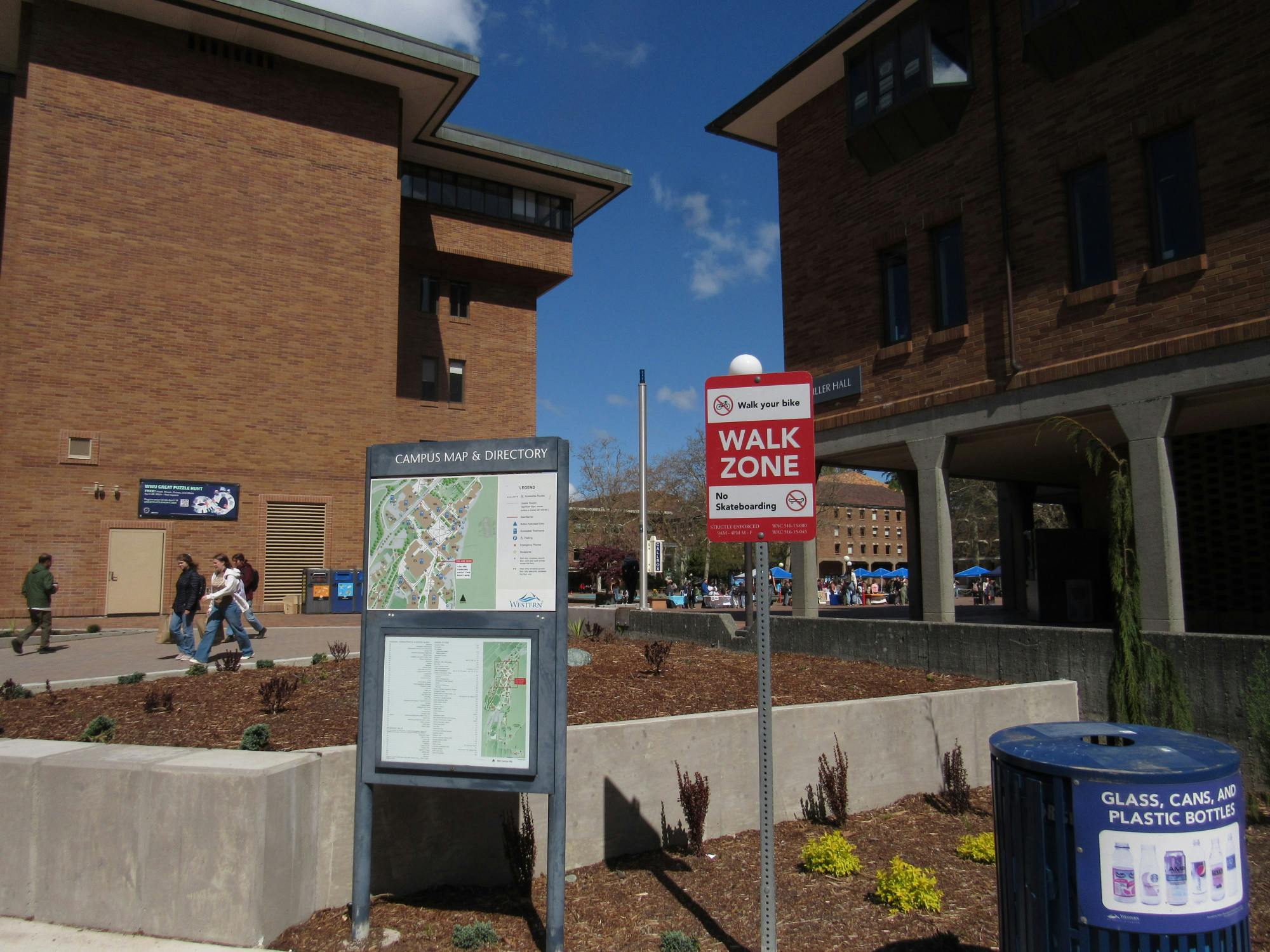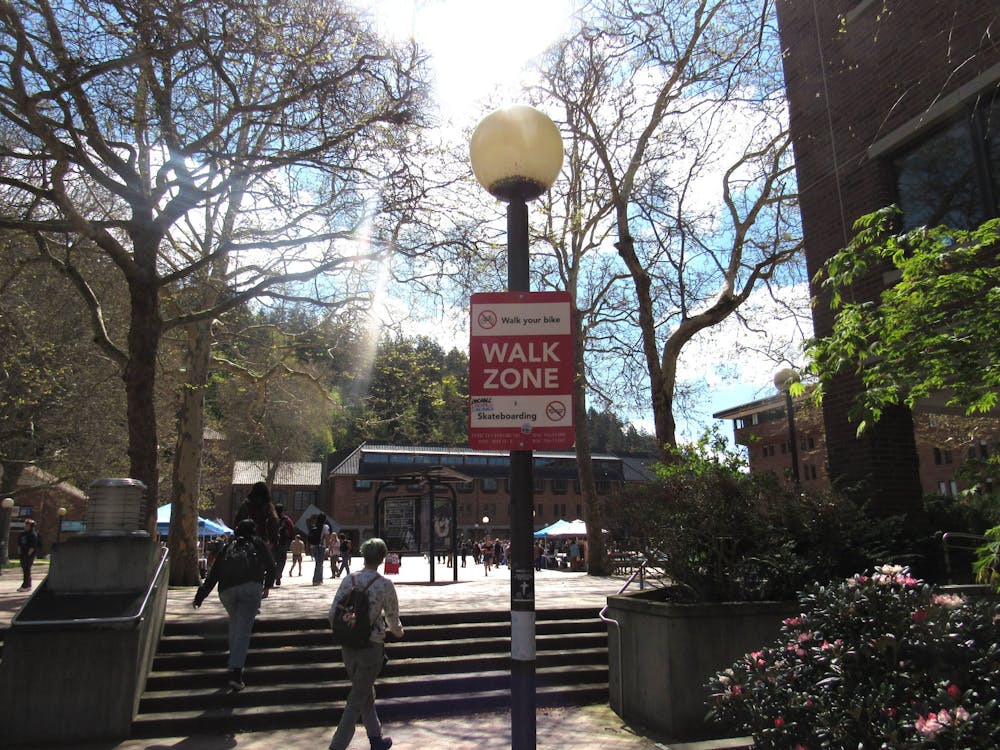Western Washington University’s Campus Development Plan, a plan to improve and modernize campus in the next 10 to 15 years, includes a designated pathway for micro-mobility users such as bicycle or scooter riders.
While the plan is still in development and far from fruition, the pathway, along with other new developments on campus, will give students an idea about the changes happening on campus.
In the meantime, Western plans to install three micro-mobility counters on campus this summer, “in an effort to collect data on micro-mobility ridership”. There will be two counters on south campus and one on north campus, allowing campus development planners to gather data and determine how changes to programming and infrastructure affect ridership.
“They're basically these conductive loops that get cut into the asphalt or concrete and laid down and grouted in,” said Andrea Reiter, the Commute Options Program Manager at Western. “They can sense metal going across them and they just count bikes and scooters.”
A possible location for the micro-mobility pathway is East College Way, the road going through the back of campus next to the Sehome Arboretum.
“The best pathway for bikes is on the east side of campus on East College [Way], which can get you from South Campus up to basically Old Main,” Reiter said.
Garrett Gundlach, a third-year Western student, agreed that a pathway on East College Way would be an ideal location.
“That would be the perfect spot,” Gundlach said. “If I do bike to school, I go on that road. That's the only place I will go, and there's a lot of cyclists back there.”

A “Walk Zone” sign situated at one of the entrances to Red Square at Western Washington University in Bellingham, Wash., on April 22, 2024. Micro-mobility users are asked to walk with their equipment instead of riding through. // Photo by Bodey Mitchell
One of the difficulties of installing a micro-mobility pathway is Western's condensed campus. Reiter explained how the campus is “basically the center of a doughnut hole” surrounded by the Arboretum on one side and neighborhoods on the other. This poses a problem for developing the campus.
Reiter also explained how the roads to campus are relatively steep hills, which can turn kids away from biking to campus and make it unlikely to increase ridership on campus.
“Campus is at the top of a hill,” Reiter said. “So you need to be either physically fit enough to bike a pretty good incline up to campus or afford an e-bike, which is more expensive than a traditional bike and has more maintenance demand.”
JD Weidman, the Director of Parking and Transportation Services at San Diego State University, said San Diego State had a similar problem where the roads around campus are fairly difficult to bike on.
“There's not a lot of bike infrastructure right off campus, so biking is not a super dominant mode [of transportation],” Weidman said.
San Diego State’s pathway for micro-mobility users runs through the main promenade on campus. Both sides of the pathway have a tactile warning strip making it clear that there is a pathway. Weidman explained that the pathway doesn’t have a lot of signage, making it self-regulated among users.
“[It’s] kind of the ideal thing from a design perspective,” Weidman said. “It's so intuitive for people and there are enough other people out there where it's religious, intuitive and obvious that you need to be courteous.”
Weidman also explained how one of the more important things when designing a pathway for micro-mobility users is to have a designer that incorporates all modes of mobility. While the pathways on San Diego State’s campus were initially designed for bikes, skating has become a main form of transportation among students using the pathways, tapping into the prevalent skate culture in Southern California.
“I think that it’s important to have the right designer to create a path that fits for any campus because every campus is going to be a little bit different,” Weidman said. “Make sure you have a designer that has a specific active transportation lens and really understands how it feels to be on different forms of transportation.”
Bodey Mitchell (he/him) is a campus life reporter for The Front this quarter. He is a second-year Journalism pre-major. In his spare time, Bodey can be found snowboarding or playing guitar. You can reach him at bodeymitchell.thefront@gmail.com.






